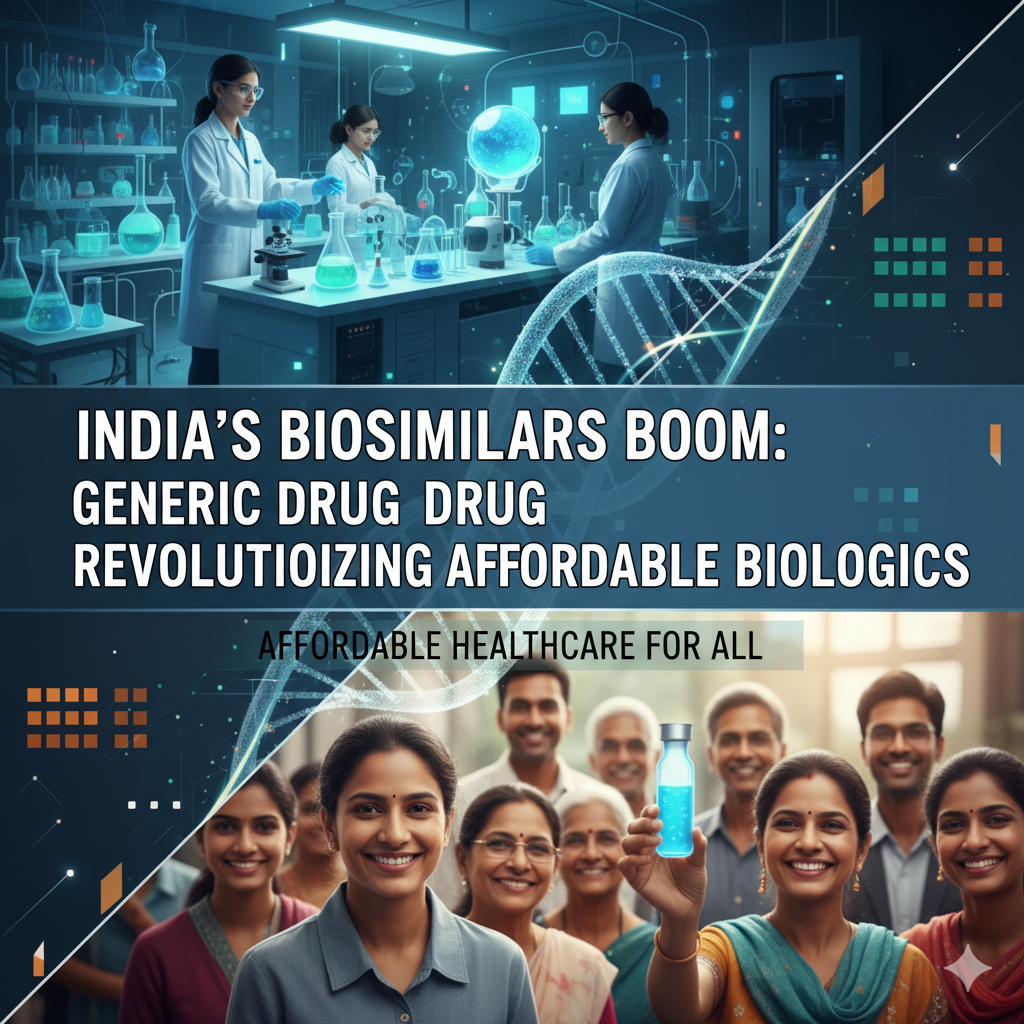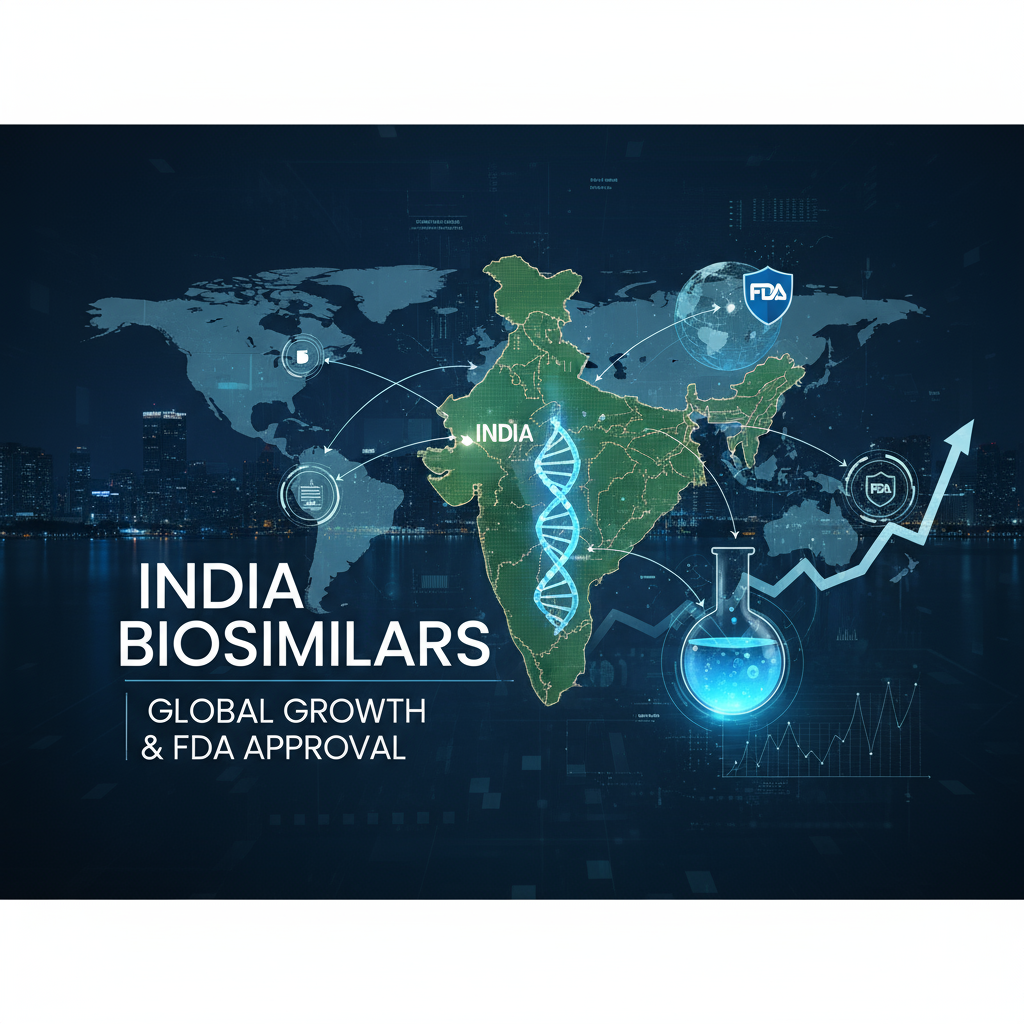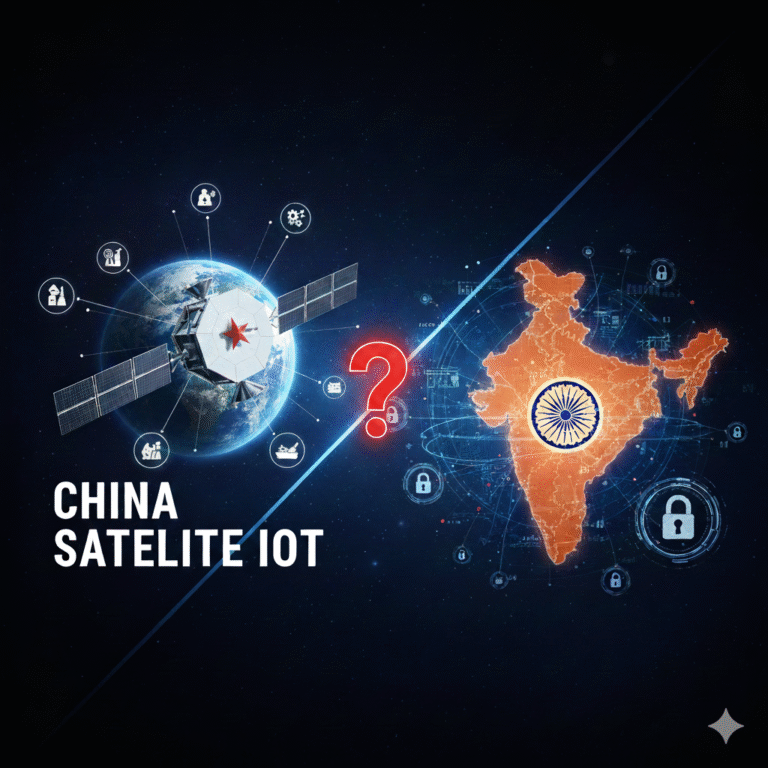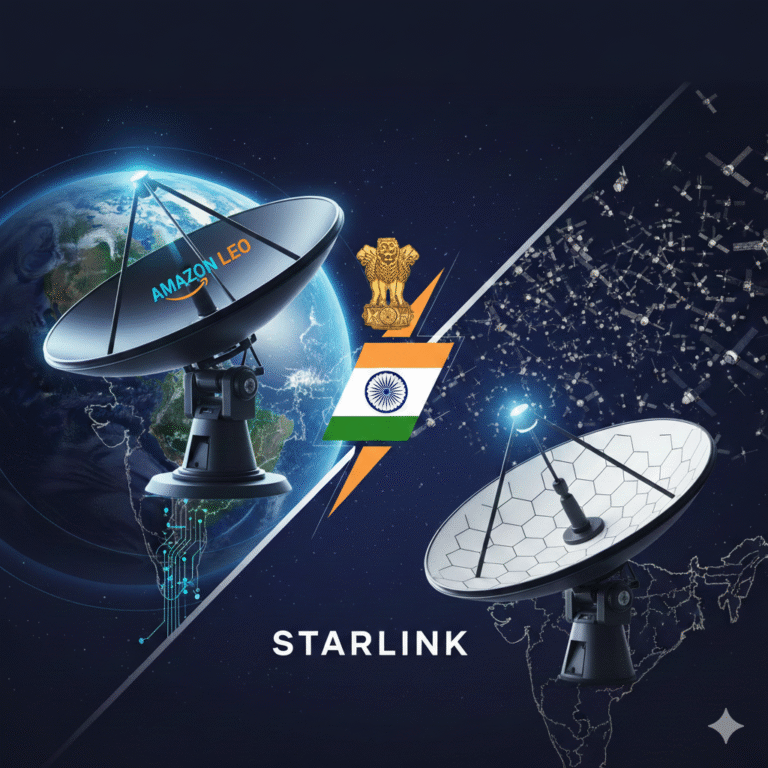Key Highlights
- Pioneer Advantage: India approved world’s first biosimilar in 2000 for Hepatitis B treatment, preceding Europe (2006) and US (2015), with 135+ domestic biosimilar approvals—unrivaled globally
- Explosive Growth: Biosimilars market valued at ₹437 crore ($51M) in May 2025, projected to reach ₹1,649 crore ($192.5M) by 2034 at 14.2% CAGR, with alternative forecasts suggesting $37.09 billion by 2031
- Global Recognition: Biocon among few companies worldwide with FDA, EMA, Australian, and Japanese approvals; recent FDA approval for Yesafili (bevacizumab biosimilar) marks ophthalmology milestone
- Patent Windfall: 39 high-value biologic patents expiring 2025-2032, representing over $150 billion in annual global sales—massive opportunity for Indian manufacturers
- Innovation Ecosystem: BIRAC invested ₹1,560 crore supporting 102+ biotech startups through schemes like BIG, SEED, LEAP, with 2,127 pharmaceutical startups among 1,40,803 DPIIT-recognized entities
Understanding Biosimilars: Beyond Generic Drugs

Biosimilars represent the next frontier in India’s pharmaceutical dominance, building on decades of generic drug expertise to address the complex world of biological medicines. Unlike generic drugs which are exact chemical replicas of brand-name medications, biosimilars are “highly similar” but not identical to reference biologics.
This distinction matters profoundly. Biologics are derived from living organisms—bacteria, yeast, animal cells—using recombinant DNA technology and other biotechnological processes. Their molecular complexity means that biosimilars require extensive comparability studies demonstrating similar quality, safety, and efficacy rather than simple bioequivalence tests used for generics.
Therapeutic applications span critical healthcare needs: cancer treatment, autoimmune disorders like rheumatoid arthritis, rare genetic conditions, diabetes, cardiovascular diseases, and chronic kidney diseases. These life-saving treatments previously remained financially out of reach for millions of patients until biosimilars entered the market offering 30-60% cost reductions.
India’s Biosimilars Market: From Pioneer to Powerhouse
Market Size and Growth Trajectory
India’s biosimilars journey began remarkably early. In 2000, India became the first country to approve a biosimilar—for Hepatitis B treatment—preceding Europe’s first approval by six years and the United States’ by fifteen years. pmc.ncbi.nlm.nih

Today’s market metrics reveal explosive growth potential:
Current Valuation: ₹437 crore ($51 million) as of May 2025
Conservative Projection: ₹1,649 crore ($192.5 million) by 2034 at 14.2% CAGR
Aggressive Forecasts: $1.51 billion (FY2025) reaching $6.44 billion (FY2033) at 19.89% CAGR, or even $8.59 billion (2024) surging to $37.09 billion (2031) at 27.6% CAGR
The dramatic range in projections reflects both the sector’s nascency and its enormous potential. Global biologics markets approach $390 billion annually, with India positioned as the affordable biosimilar leader serving both domestic needs and export markets. birac.nic
India’s Biotech Industry Foundation
The broader biotechnology ecosystem provides the foundation for biosimilars success:
Industry Scale: 800+ biotech companies operating in India
Manufacturing Excellence: Second-highest number of USFDA-approved plants globally
Growth Trajectory: From ₹85,650 crore ($10 billion) in 2015 to ₹8,69,348 crore ($101.5 billion) in 2024—nearly 10-fold expansion
Pharmaceutical Context: Overall pharmaceutical industry valued at ₹4,71,075 crore ($55 billion) in FY25, projected to reach ₹11,34,500 crore ($130 billion) by 2030
India’s unrivaled feat: 135+ approved biosimilars in domestic portfolio—more than any other nation. This demonstrates not just regulatory capacity but also technical sophistication and manufacturing scale.
Growth Drivers: Why Biosimilars Are Booming
Disease Burden and Healthcare Demand

India grapples with escalating chronic disease epidemics that create massive demand for biologic-based treatments:
Rising Rates: Cancer, diabetes, rheumatoid arthritis, cardiovascular diseases, chronic kidney diseases afflict growing populations requiring long-term treatment.
Treatment Accessibility: Originator biologics cost prohibitively, placing essential therapies beyond reach for most Indian patients. Biosimilars offering 30-60% cost reductions democratize access to life-saving treatments.
Market Expansion: As health literacy, insurance coverage, and disposable incomes rise, biosimilar adoption accelerates in tier-2 and tier-3 cities beyond traditional metropolitan markets.
Manufacturing Competitiveness and Cost Advantages
India’s cost structure provides formidable competitive advantages:
Low Production Costs: Manufacturing expenses significantly below developed nations enable competitive pricing globally.
Favorable Labor Laws: Regulatory frameworks supporting industrial development while maintaining quality standards.
Skilled Technical Talent: Abundant workforce with pharmaceutical, biotechnology, and engineering expertise accumulated over decades.
CDMO Competitiveness: Contract Development and Manufacturing Organizations attracting both domestic and global clients seeking cost-effective production capabilities. World-class manufacturing facilities under development generate value through contract services.
Policy Support and Government Initiatives
Strategic government interventions catalyze biosimilars growth:
Biotechnology Industry Partnership Program: Provides financial support for R&D and local production with streamlined approval processes.
Production Linked Incentive (PLI) Scheme: Extended to pharmaceutical and biotech sectors, encouraging domestic manufacturing and export competitiveness.
BIRAC Ecosystem: Biotechnology Industry Research Assistance Council, a not-for-profit organization under Department of Biotechnology, has invested ₹1,560 crore supporting 102+ biotech startups through multiple funding schemes over 13 years.
Regulatory Maturity and Global Approvals
India’s regulatory framework has matured to international standards:
Guidelines Alignment: Biosimilar guidelines well-aligned with WHO, EU, and US standards, enabling exports to regulated markets.
FDA Approvals: Recent milestones include Biocon’s bevacizumab biosimilar (Yesafili) approved for ophthalmology applications, expanding treatment access in lucrative US markets.
Global Credibility: Biocon receiving approvals from US, Europe, Australia, and Japan establishes Indian biosimilars as globally competitive. Japanese approval for Insulin Glargine particularly significant given Japan’s stringent regulatory standards.
The Patent Expiration Wave
Perhaps the most significant growth driver is the impending patent cliff:
By 2020: Many key biologic patents had already expired, providing initial market entry opportunities.
2025-2032 Window: 39 high-value biologic patents expiring, collectively accounting for over $150 billion in annual global sales. lupin
Blockbuster Opportunities: Patents expiring include adalimumab (Humira), trastuzumab (Herceptin), rituximab (Rituxan), pembrolizumab (Keytruda), nivolumab (Opdivo), and dozens more immunology, oncology, and metabolic disease treatments.
India’s generic drug expertise translates directly to biosimilar field, positioning domestic manufacturers to capture substantial market share as these blockbusters lose patent protection.
BIRAC Ecosystem: Nurturing Biotech Innovation

Institutional Framework
BIRAC Structure: Not-for-profit Section 8 organization under Department of Biotechnology, established in 2012. birac
Investment Impact: Committed ₹349 crore for biotech startups; actual investment reached ₹1,560 crore—4.5x leverage demonstrating ecosystem multiplier effects.
Startup Support: 102+ biotech startups directly supported, contributing to India’s 5,000+ biotech startup ecosystem that grew 10x since 2012.
Comprehensive Funding Schemes
BIRAC operates targeted schemes addressing different innovation stages:
Biotechnology Ignition Grant (BIG): Early-stage idea validation and proof-of-concept support; largest early-stage biotech funding program in India with 7,367 applications received.
Sustainable Entrepreneurship and Enterprise Development (SEED): Supporting micro, small to medium enterprises (MSMEs) in refining ideas and establishing proof of concepts.
Launching Entrepreneurial Driven Affordable Products (LEAP): Pilot testing and commercialization support bridging lab to market gap.
Intensifying the Impact of Industrial Innovation (i4): Industrial partnerships and scaling assistance.
Promoting Academic Research Conversion to Enterprise (PACE): Bridging academia-industry divide through technology transfer facilitation.
Ecosystem Impact
The BIRAC model demonstrates comprehensive support beyond mere financing:
Infrastructure: 64 bioincubators providing physical incubation space to 1,500+ startups.
IP Wealth Creation: 1,100+ patents filed from supported ventures.
Market Products: 700+ biotech products reaching commercialization from subset of incubated startups.
Regulatory Support: Assistance navigating complex approval processes reducing time and cost barriers for startups.
Key Players: India’s Biosimilars Champions
Domestic pharmaceutical giants dominate India’s biosimilars landscape, leveraging decades of generic drug expertise:
Biocon: The Global Leader
Biocon represents India’s biosimilars success story par excellence:
Global Approvals: Among few companies worldwide with approvals from US FDA, European EMA, Australian TGA, and Japanese PMDA.
Recent Milestone: USFDA approval for Yesafili (bevacizumab biosimilar) marking significant entry into ophthalmology segment.
Product Portfolio: Biosimilar insulins (including first FDA-approved interchangeable insulin glargine), oncology biosimilars, immunology biosimilars.
Financial Performance: Q1FY26 operating revenue reached ₹3,942 crore, up 15% YoY, with biosimilars segment growing 18%.
Strategic Positioning: Focused on regulated markets (US, EU) while maintaining strong emerging market presence.
Other Major Players
India’s biosimilars ecosystem includes multiple capable manufacturers:
Sun Pharma: Leveraging pharmaceutical scale for biosimilars development.
Zydus Cadila: Expanding from generics to complex biologics.
Reliance Life Sciences: Bringing industrial conglomerate resources to biotechnology.
Lupin Pharma: Actively pursuing biosimilars opportunities as patents expire.
Intas Biologicals: Specialized biosimilars-focused entity.
Wockhardt: Veteran pharmaceutical company entering biosimilars.
This competitive landscape drives innovation, cost reduction, and quality improvements that benefit patients globally.
Regulatory Framework: Ensuring Quality and Safety
India’s regulatory architecture for biosimilars has evolved to balance innovation with patient safety:
Central Authority: CDSCO
The Central Drugs Standard Control Organization under Ministry of Health and Family Welfare serves as apex regulatory body:
Core Functions: Ensuring quality, safety, efficacy of pharmaceuticals; approving new drugs, clinical trials, manufacturing licenses; regulating medical devices; implementing Good Manufacturing Practices (GMP).
Legal Foundation: Drugs and Cosmetics Act, 1940 provides cornerstone framework governing manufacture, sale, distribution of drugs, cosmetics, medical devices.
Multi-Tier Approval Process
Biosimilar approval involves rigorous multi-stage evaluation:
Institutional Bio-Safety Committee (IBSC): First-level review for recombinant DNA work.
Review Committee on Genetic Manipulation (RCGM): Assessing genetic engineering applications.
Genetic Engineering Appraisal Committee (GEAC): Evaluating environmental and biosafety aspects.
CDSCO Final Approval: Drug Controller General of India (DCGI) granting marketing authorization after comprehensive review.
Key Regulatory Requirements
Approval mandates demonstrate India’s alignment with international standards:
Comparative Quality Assessment: Comprehensive analytical and functional studies demonstrating similarity to reference product.
Non-Clinical Studies: Pharmacodynamics, pharmacokinetics, toxicology evaluation in animal models.
Clinical Trials: Safety, efficacy, immunogenicity assessment in human subjects.
Risk Management Plan: Identifying, characterizing, mitigating potential risks.
Post-Marketing Surveillance: Continuous safety and efficacy monitoring after approval ensuring ongoing patient protection.
Comparative Global Context: India’s Positioning
Europe: Regulatory Pioneer
Europe leads in biosimilar regulatory maturity:
Legal Framework: Directive 2001/83/EC Article 10(4) specifying criteria for Marketing Authorization Applications.
Adoption: Widely accepted biosimilar use unlike some other markets.
Standard Setting: EU guidelines influenced global regulatory approaches.
United States: Stringent Standards
US regulatory pathway emphasizes rigorous evidence:
Legal Basis: Biologics Price Competition and Innovation Act (BPCIA) 2009 creating biosimilar licensing framework.
FDA Requirements: High evidence standards for approval; separate “interchangeability” designation beyond basic biosimilarity.
Market Evolution: Slower initial adoption than Europe but accelerating as physician confidence builds.
India’s Unique Position
India balances regulatory rigor with market access needs:
International Alignment: Guidelines consistent with WHO, EU, US frameworks enabling export to regulated markets.
Approval Timelines: Faster than US though adoption lags Europe, requiring continued streamlining.
Cost-Quality Balance: Maintaining quality standards while keeping development costs lower than Western counterparts.
Challenges: Barriers to Overcome
Patent-Related Obstacles
Intellectual property issues create significant barriers:
Patent Litigation: Developing biosimilars before reference product patents expire risks litigation, reducing production and delaying market introduction.
Evergreening: Patent extensions through minor modifications delay biosimilar entry. Pertuzumab controversy highlights these complications despite legal protections against evergreening.
Profitability Impact: Legal uncertainties discourage investment in new biosimilar development, particularly for smaller companies.
Development and Regulatory Barriers
The biological complexity creates inherent challenges:
High Development Costs: Extensive analytical, non-clinical, clinical studies required for demonstrating similarity demand substantial investment.
Technical Complexity: Novelty of biologics makes biosimilar development difficult for new entrants lacking specialized expertise.
Regulatory Navigation: Multi-tier approval processes time-consuming and documentation-intensive, potentially deterring smaller firms.
Market Access and Adoption
Regulatory approval alone doesn’t guarantee market success:
Delayed Adoption: Unlike EU’s broad biosimilar acceptance, Indian markets show slower physician and patient uptake requiring education efforts.
Reimbursement Gaps: Insurance coverage and government scheme inclusions incomplete, limiting access despite lower costs.
Physician Confidence: Building trust in biosimilar equivalence requires evidence generation and medical education.
Price Regulation: National Pharmaceutical Pricing Authority (NPPA) price controls must balance affordability with innovation incentives.
Economic and Healthcare Impact
Affordability Revolution
Biosimilars’ primary impact is democratizing access to life-saving biologics:
Cost Reduction: 30-60% lower prices compared to originator biologics make treatments accessible to wider patient populations.
Universal Health Coverage: Supporting government schemes like Ayushman Bharat by reducing treatment costs.
Out-of-Pocket Reduction: Lessening catastrophic health expenditures that push families into poverty.
Employment and Economic Growth
The biosimilars boom creates quality employment:
Direct Jobs: 800+ biotech companies employing skilled workforce in research, manufacturing, quality control, regulatory affairs.
Indirect Employment: Supply chains for raw materials, equipment, logistics; service sectors like consulting, legal, IP management.
Export Earnings: Global biosimilar sales contribute foreign exchange strengthening India’s balance of payments.
Innovation Ecosystem Development
Beyond immediate economic metrics, biosimilars build long-term capabilities:
R&D Capacity: 2,127 pharmaceutical startups driving innovation with government support.
Clinical Infrastructure: Trial sites, bioanalytical labs, regulatory expertise developing.
Technology Transfer: Manufacturing innovations, analytical methods, quality systems advancing Indian biotechnology.
Future Opportunities: Next-Generation Technologies

India’s biosimilars sector stands poised to capture emerging technological trends:
Advanced Biotechnologies
Gene-Editing and CRISPR: Precision medicine applications for rare disease treatment.
Synthetic Biology: Novel production platforms enhancing efficiency and scalability.
AI in Biotechnology: Drug discovery acceleration, clinical outcome prediction, manufacturing optimization.
Manufacturing Innovations
Continuous Manufacturing: Replacing batch processes with continuous flow for cost efficiency and quality consistency.
Single-Use Technologies: Reducing contamination risks and facility turnaround times.
Untapped Therapeutic Areas
Ophthalmology: Biocon’s Yesafili approval opening segment with multiple biosimilar opportunities.
Neurology: Monoclonal antibodies for multiple sclerosis, Alzheimer’s disease, other neurological conditions.
Rare Diseases: Orphan biologics going off-patent creating niche high-value markets.
Policy Recommendations for Policymakers
Strategic interventions can accelerate India’s biosimilars leadership:
Regulatory Streamlining
Single-Window Clearance: Unified approval processes reducing bureaucratic delays.
Fast-Track Pathways: Expedited review for products with proven global approvals.
Digitization: Electronic application and review systems improving transparency and speed.
Innovation Support
Enhanced R&D Funding: Increased BIRAC allocations and tax incentives for biosimilar research.
Infrastructure Development: Centers of Excellence for biologics characterization and shared manufacturing facilities.
Clinical Trial Networks: Coordinated multi-site trial capabilities reducing development timelines.
Market Development
Physician Education: Medical curriculum integration and continuing education on biosimilar equivalence.
Reimbursement Parity: Insurance coverage matching originator biologics ensuring patient access.
Awareness Campaigns: Public education on biosimilar safety and efficacy building confidence.
IP Management
Anti-Evergreening Enforcement: Stricter scrutiny of patent extensions under Section 3(d).
Technology Transfer: Voluntary licensing incentives and patent pool participation.
Compulsory Licensing: Framework for public health emergencies ensuring essential medicine access.
Conclusion: India’s Biosimilars Destiny
India’s biosimilars boom represents more than industrial policy success—it embodies the transformation of pharmaceutical expertise into healthcare accessibility for millions. From pioneering the world’s first biosimilar approval in 2000 to achieving 135+ domestic approvals, India has established unrivaled leadership in affordable biologics.
The growth trajectory is breathtaking: from ₹437 crore ($51 million) in 2025 potentially exceeding $37 billion by 2031, driven by disease burden, manufacturing competitiveness, policy support, regulatory maturity, and the golden opportunity of 39 biologic patent expirations through 2032.
Key players like Biocon demonstrate India’s global competitiveness, earning FDA, EMA, Australian, and Japanese approvals that validate Indian biosimilars’ quality and safety. The BIRAC ecosystem nurtures innovation pipelines ensuring continued dynamism with ₹1,560 crore invested across 102+ startups.
Challenges persist—patent litigation, evergreening, regulatory delays, adoption barriers—requiring sustained policy attention and industry collaboration. Yet emerging opportunities in next-generation technologies, untapped therapeutic areas, and the massive patent cliff create unprecedented potential for Indian manufacturers willing to invest in R&D, quality, and market development.
Biosimilars represent a critical lens for understanding India’s economic development, healthcare transformation, and global competitiveness. The sector embodies themes of innovation policy, regulatory governance, international trade, public health, and industrial strategy that define 21st-century statecraft.
The ultimate vision is clear: India becoming the world’s premier producer of high-quality, affordable biosimilars that improve patient outcomes globally while driving domestic bio-economy growth from $10 billion (2015) to potentially $130 billion pharmaceutical sector by 2030. This biosimilars-led transformation can democratize access to life-saving biologics for cancer, diabetes, autoimmune disorders, and rare diseases that have remained financially out of reach for billions.









+ There are no comments
Add yours